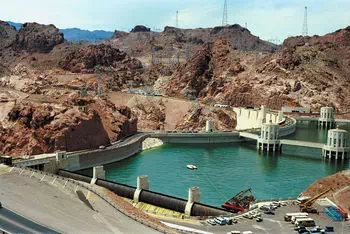Issue Summary
U.S. EPA
Other Federal Agencies
States
Organizations/Non-Government Programs
Databases and Tools
Energy efficiency is the avoidance or reduction of energy use through applied practices and technologies. It may be achieved directly at an end-use, or indirectly through related efficiencies (e.g., water efficiency reduces the energy used to pump, heat, and treat the water). By improving energy efficiency, local governments can save money and help protect the quality of the local and global environment. Communities also benefit from increased electric system reliability, economic development, and leadership status in sustainable practices.
By improving energy efficiency, local governments decrease energy consumption, thus reducing their operating costs. Cities and counties can improve the energy efficiency of their infrastructure through a wide variety of cost-effective activities. Some examples include: purchasing ENERGY STAR labeled computer equipment and other products; retrofitting traffic lights to use light-emitting diode (LED) technology; improving the performance of energy-intense operations, such as water and wastewater treatment plants; properly maintaining building heating and cooling systems (which also improves occupant comfort and productivity); specifying energy-efficient design and equipment for new buildings and end-of-life-cycle replacements; and using the five-stage approach to upgrade existing building stock (lighting, system tune-ups, load reductions, fans, and heating and cooling system upgrades). Upgrades can often be achieved with no money out of pocket when using an energy service company and making payments from the energy savings.
Local governments have broad influence over community-wide energy use through land-use planning, building codes, public transportation, waste management, school district operation or oversight, and public utilities. Specific examples within these categories include smart growth practices, pedestrian- and bicycle-friendly neighborhoods, mass transit, resource-efficient building codes, shade trees, green spaces, municipal recycling programs, and electricity generated with landfill methane gas.
In communities where electrical demand is close to maximum supply capacity, energy efficiency decreases the potential for brownouts. It also benefits the local economy. According to the U.S. Department of Energy, for every $1.00 spent in local economies, energy efficiency generates $0.57 to $0.84 more economic activity than the payment of energy bills. Many cities and counties are combining planning and sustainability activities to balance local growth, energy use, and goals for a healthy environment. In doing so, they foster local economic development as well as the health and well-being of citizens and the environment.
U.S. EPA Energy Efficiency Homepage. Starting point for EPA's energy efficiency resources.
EnergyStar. The U.S. Environmental Protection Agency's program that helps identify energy-efficient products, including lighting, computers and many other products. LGEAN maintains an Energy Star page which contains links to the program.
Other Federal Agencies/Programs
Department of Energy Energy Efficiency Homepage. Starting point for the DOE's resources on energy efficiency and renewable energy.
REopt Web Tool. This public tool created by the National Renewable Energy Laboratory enables local officials to evaluate the economic viability of distributed PV, wind, battery storage, combined heat and power (CHP), and thermal energy storage, identify system sizes and dispatch strategies to minimize energy costs, and estimate how long a system can sustain critical load during a grid outage.
Green Building State Resource Locator. "Green building" refers to good design and management practices in all phases of building construction and operation to promote a healthy environment and energy efficiency. EnvCAP.org has developed resources to help you locate green building information, including this state resource locator.
Organizations/Non-Government Programs
Building Owners and Managers Association (BOMA). BOMA offers several energy efficiency resources including BEEP (BOMA Energy Efficiency Program), an online educational program that gives you the information, strategies, technologies, how-to guides and resources you need to reduce energy and costs.
EnergyPlus. EnergyPlus is a stand-alone simulation program without a 'user friendly' graphical interface that models heating, cooling, lighting, ventilating, and other energy flows as well as water in buildings.
ENERGY STAR Home Energy Yardstick: The Home Energy Yardstick is an online tool for individuals to compare their households' energy use to others across the country and to get recommendations for improvement. Local governments could utilize this tool to promote energy efficiency throughout their communities.
Building Energy Codes Program. The COMcheck materials (software, manual code compliance, and reference guides) simplify and clarify energy code compliance.


